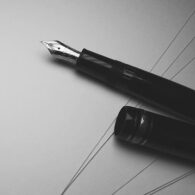Notes on The World Aloft
We wanted to make an issue about finding a way: a way forward, a way out, a way into someplace new. As we write, we are waiting for resolutions, despite the fact that resolutions are not frequent and never permanent. We are waiting for election results, waiting for a vaccine, waiting for 545 children to be reunited with the families the American government divided them from, waiting to leave for somewhere else, waiting for a thousand petty things that have no political significance.
What we know now is that even after an election is called, there is no final result waiting for us. That kind of crystalline purity is only possible for things that stay still, that are capable of lining up exactly in order, molecules locked into perfect repeating patterns. John Ruskin, a man who thought a lot about stones, wrote a funny little book in 1866 called Ethics of the Dust, in which he gives a series of lectures about crystals to students at a girls’ school. The girls are asked to imagine themselves as dust, the decayed particles of a vital matter that they can reassemble by ordering their bodies and behavior in virtuous ways. In this perfectly balanced chemical economy, Ruskin says,“Things are not wholly alive, or wholly dead. They are less or more alive.” A structure that seems final turns out to be resonating, breaking apart and attracting new molecules all the time. This solid crystal is less a hard ruby than a glittering plate of red Jell-O: it’s always moving just a little, responding to the waves of sound and energy that buffet it. No configuration is definitive. The world is always aloft and we rarely get the satisfaction of a clean break between one version of life and another. We’re wiggling our way out of this.
We want to be able to recognize a good surprise, if good surprises are possible anymore. We know it’s not time, if ever, to abandon a defensive posture. This is an impasse. And yet, the pieces we’ve gathered here are working the trap. If we have not yet built the world we want, we have, nonetheless, been constructing a lot of pocket universes on the sly. This isn’t nothing.
A small thing. There are worlds within worlds, vibrant gardens sprouting around the corner, trees expanding by fractals. We have mapped some of them here—many thanks to Dominique Strange for bringing those maps to imaginative life with these illustrations.
Kendall DeBoer shares with us the life and work of one prolific world builder—modernist painter, set designer, and poet Florine Stettheimer. Using “Goldilocks and the Three Bears” as an analytical framework, DeBoer traces Stettheimer’s forays into worlds both unnervingly public and restrictively intimate. Ultimately, DeBoer finds, the artist and her compatriots flourished in a realm of Stettheimer’s own making: a space that facilitated true emotional and intellectual connection through shared aesthetic experiences.
Artist-writer and researcher Kristi McGuire sits down to chat with author Joni Murphy upon the release of Murphy’s latest novel, Talking Animals. Set in a version of Manhattan that is populated entirely by animals, Murphy’s second novel contends with climate change, the desultory labyrinths of academia, and political scapegoating. Murphy and McGuire’s sweeping conversation considers everything from “undigested trauma,” to the enduring powers of parables and nostalgia, to using “three interns ago” as a unit of time.
Kirsten Ihns’s “NEBULA PAINLESS FOAM PET” responds to the dreamworlds of Kim Keever’s aquarium photographs, which turn fish tanks into landscapes that might come from millennia ago or millennia to come or from another planet entirely. In all cases, they are some kind of alternative to life as it is currently experienced and Ihn’s poem gets right to the heart of the gamble these photographs make; they put a face on other possibilities for the world and careen right up to the edge of abstraction to do it.
A.V. Marraccini’s capacious essay departs from Christopher Wren’s plan to remake London after the Great Fire of 1666, a vision for a city that was never built. It is also a meditation on pandemic time, the Metabolist architecture of Japan after World War II, Agnes Martin’s grids, and the possibilities for creating buildings and cities—geometries—that change with their populations rather than clinging to deterministic plans that attempt to keep the world static, regardless of fluctuating historical needs. Marraccini dives into the wreck and surfaces with a bouquet of counterfactuals that show how things that seem like foregone conclusions often have in them the give of contingency. This may explain why it’s so tempting to use biological metaphors to describe how built environments work: like organisms, they are records of growth and change, potential fulfilled and potential stillborn.
Liz Collins, an artist working in textiles and mixed media, has spent the last two years with maps. Invited to make a body of work in response to the navigation aids held in the Sidney R. Knafel Map Collection at the Phillips Academy, she has embroidered their histories onto canvas, paper, and walls. Here she shows her labyrinthine path through that artwork, following a thread she first picked up when she was a sixteen-year-old student at that school.
Nara Roberta Silva has charted the routes of migrants to the United States from the Global South. Silva, herself an immigrant “with papers,” argues that the violence against undocumented immigrants is a crisis point that exposes the violence of a larger state-making immigration system that is not only functionally racist but functions to produce and define race. On this map, there are trade flows, but bodies come up hard against walls.
We began writing this letter before election results came in, and we are concluding it now in the aftermath. The dust is settling but the work remains the same.



Dilettante Mail
Get updates from us a few times a year.